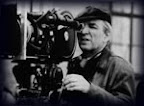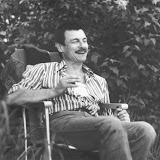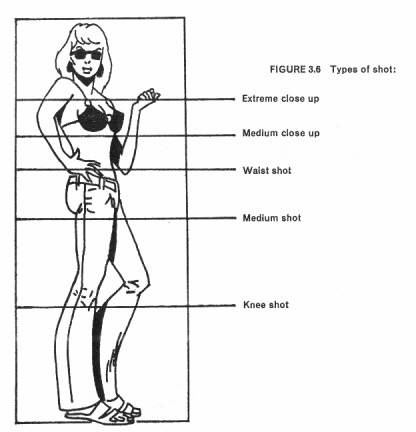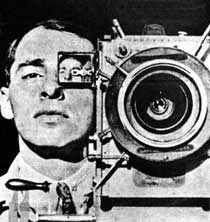Viewing world in shots, segments, which are associated by thought not by space. It's "humanized" space, preconditioned and ideological. It's always somebody's space. Framing start with seeing. It's MY choice and "edited" reality.
The tention is in not shown! We adding to the mystery of life by making it into man-made anigma. Very playfull concept.
New (processed) reality is more powerful than the material (original reality)...
See Montage and Drive-Through-Theory
Film Site and other affiliated pages from POV (book-in-progress): Title Page for "View Points" and Java Page for the Chapter "Gaze".
Also, see Self and Tech from Post-American Book.
Theatre w/Anatoly: Visual Composition
Virtual Film Project for 1999+ ...
Collection of Great Shots:
from Fellini
[ image : 8.5 selection ]
 |
| Fellini |
Kurosawa
[ image ]
 |
| From Cinema |
Bergman
[ images analysis ]
 |
| From Film |
Tarkovsky
[ image ] http://picasaweb.google.com/anatoly.antohin/Tarkovsky
 |
| Tarkovsky |
...
So, you understood the main power of the shot -- the suspence, what we do not see. This is open structure principle, when you challenge viewers' imagination. When they want to see more...
Show more... but in the same way, when they want more and more! Oh, you got them!
The rule: if you do not see the shot before and shot after in your mind -- don't shoot!
Never shoot "isolated" shot, then you better switch to photography. "Cinematography" means movement (cinema = kinema = dynamic). In short, motion pictures!
If you feel that your story board looks like a slide show, you have problems.
Go back and "unlock" your shots. Disbalanced them, make them crave for a CUT.
An advise. Keep returning to spectatorship, when you are shooting, but watching your film.
Using Internet terms, each shout must be hyper-linked with the rest of the film. Each new shot continue this development of the frame of references. Like in music. Visually, you "sing" -- and here come the style.
If you can manipulate shots, you are in business. Most of the movies you see are done by tv-minds (recording). If you shot didn't process reality into new reality, you go to television.
But first, try the art of film-MAKING. Did you notice it? The making! You MAKE your shots. (Don't get confused with this "take #1, #2 -- there is nothing there to take until you make it).
Strange Rule: I think that each film begins with one single shot you want so bad. So, you see it, but you know that this beautiful shot needs another one... no, more than just one... No, I need to shot that first before I can get to MY shot...
More rules later...
 LS
LS


